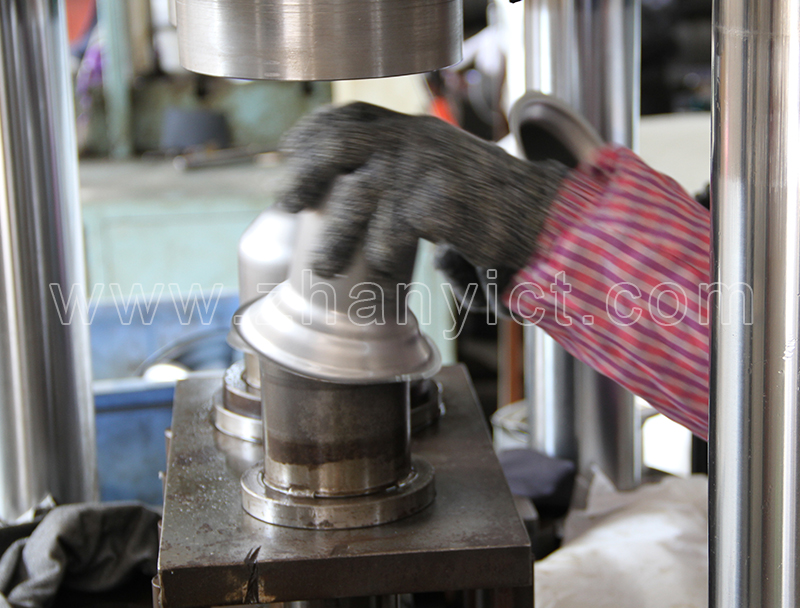In-Depth Analysis of Stainless Steel Water Bottle Stretching Process --- The Thickness Factor
Every cup holds a story, and life has its warmth. Hello everyone, and welcome to "Dong Dong's Cup Talk" As I've shared more and more content with you all, writing these pieces has become increasingly challenging. So today, I've invited a true expert, Engineer Zhang. https://www.zhanyict.com/en/ProductsDetail-VB-10515.htmlHe is the technical authority in our factory and holds a deep affection for our work. He's here today to share insights about the stretching process for stainless steel water bottles. Let's give a warm welcome to Engineer Zhang!
Hello everyone! I'm Old Zhang, and I've been in the stainless steel water bottle industry for a full twenty years. For these two decades, I've focused on practically nothing else but grappling with the craft of "stretching." https://www.zhanyict.com/en/ProductsDetail-VB-10515.htmlFrom the earliest manual punch presses to today's intelligent multi-station continuous stretching machines, from watching seasoned masters rely on experience and "listening to the sounds" to the current era of digital, parametric precision control – I've witnessed with my own eyes and worked hands-on with every evolutionary step of this process. Today, I want to talk systematically with you all about the ins and outs of the stainless steel water bottle stretching process. I hope to offer some inspiration to those new to the field and also exchange ideas and learn from the veteran masters. [Cue applause here!]
I. The Absolute Core: Different Final Thicknesses Represent Entirely Different Worlds
Stretching, simply put, is the process of using immense force to form a flat stainless steel disc (the blank) into the shape of a cup. https://www.zhanyict.com/en/ProductsDetail-VB-10515.htmlDuring this process, the material thins and elongates. Controlling the uniformity and limits of this thinning is the very soul of the stretching craft.
Many people think, "It's just a difference in thickness, just adjust the pressure." That's completely wrong! Stretching from 1.2mm down to 0.3mm involves entirely different process routes.
Final Thickness (mm): 1.2mm - 1.0mm
Equipment Selection: Medium-to-low tonnage hydraulic presses or standard mechanical punch presses (e.g., 160-315 tons).
Number of Draws (& Reduction per Draw): https://www.zhanyict.com/en/ProductsDetail-VB-10515.htmlCan be completed in 1-2 draws. The reduction per draw can be relatively high.
Key Parameter Focus: Focus on blank holder force and drawing speed. Too little blank holder force causes wrinkling; too much causes tearing. Excessive speed can lead to stress concentration.
Production Notes (& Reducing Defects): Case Example: Making a 1.0mm thick outdoor camping cup. Formed in a single draw. https://www.zhanyict.com/en/ProductsDetail-VB-10515.htmlThe key is excellent edge polishing of the blank, as any micro-cracks will tear open during stretching. Standard mineral-based drawing oil is sufficient.
Final Thickness (mm): 0.8mm
Equipment Selection: Stable mechanical punch presses or hydraulic presses (200-400 tons).
Number of Draws (& Reduction per Draw): Typically requires 2-3 draws. This enters the realm requiring fine control.
Key Parameter Focus: The R-angle (radius) of the die is critical! An R-angle that is too small causes stress concentration and guarantees tearing. https://www.zhanyict.com/en/ProductsDetail-VB-10515.htmlAnnealing becomes important here; it may be needed after the first draw to relieve work hardening.
Production Notes (& Reducing Defects): Case Example: This is the standard thickness for mainstream vacuum flask liners. The most common issues are "waisting" near the bottom of the sidewall or micro-cracks. This is often due to die R-angle wear or insufficient lubrication. Chlorinated/Sulfurized Extreme Pressure (EP) drawing oil is essential to form a protective lubricating film.
Final Thickness (mm): 0.5mm
Equipment Selection: High-precision hydraulic presses or high-speed precision punch presses (400+ tons).
Number of Draws (& Reduction per Draw): Requires 3-4 draws. The reduction per draw must be strictly controlled, and intermediate annealing is mandatory.
Key Parameter Focus: Requires extremely high die surface finish (mirror-grade). Positioning accuracy and equipment stability are paramount. https://www.zhanyict.com/en/ProductsDetail-VB-10515.htmlThe best quality drawing oil is a must.
Production Notes (& Reducing Defects): Case Example: Making ultra-lightweight business cups. We once had a batch with widespread tearing. After three days of troubleshooting, we found a new batch of material had a fluctuation of just 2% in elongation. 0.5mm is a watershed; demands on material properties, equipment, dies, and lubrication increase exponentially.
Final Thickness (mm): 0.3mm
Equipment Selection: Multi-station continuous stretching machines.
Number of Draws (& Reduction per Draw): Requires 5-6 or even more draws. The reduction per draw must be calculated with extreme precision. https://www.zhanyict.com/en/ProductsDetail-VB-10515.htmlAnnealing is required after every single draw.
Key Parameter Focus: This challenges the material's limits. Beyond all the requirements above, even the environment (temperature, dust) matters. Dies must be made from top-grade materials (e.g., carbide) and be precision-polished.
Production Notes (& Reducing Defects): Case Example: I've only seen stable mass production of 0.3mm liners in a handful of large factories. https://www.zhanyict.com/en/ProductsDetail-VB-10515.htmlThis is not just technology; it's an art. It demands extreme management rigor: the concentration of the oil, the pH of the water, the annealing temperature profile – the slightest deviation leads to total failure. This is not a game for the average factory.
The thinner the target thickness, the more draws are required, and the higher the demands on equipment precision, die quality, lubricant performance, and material uniformity become. https://www.zhanyict.com/en/ProductsDetail-VB-10515.htmlThe intermediate annealing process becomes absolutely critical.

There are stories in the cup, life has warmth, use a good cup to enjoy a healthy life. We provide OEM business to more than 100 companies around the world, and produce more than 3 million pieces of various stainless steel/plastic cups and pots annually. Honoring promises, keeping reputation, ensuring quality and quantity, and delivering on time are our service principles and our professional commitment. Dongguan Zhan Yi Commodity Technology Co.,Ltd. welcomes global merchants to conduct on-site factory inspections and in-depth cooperation.